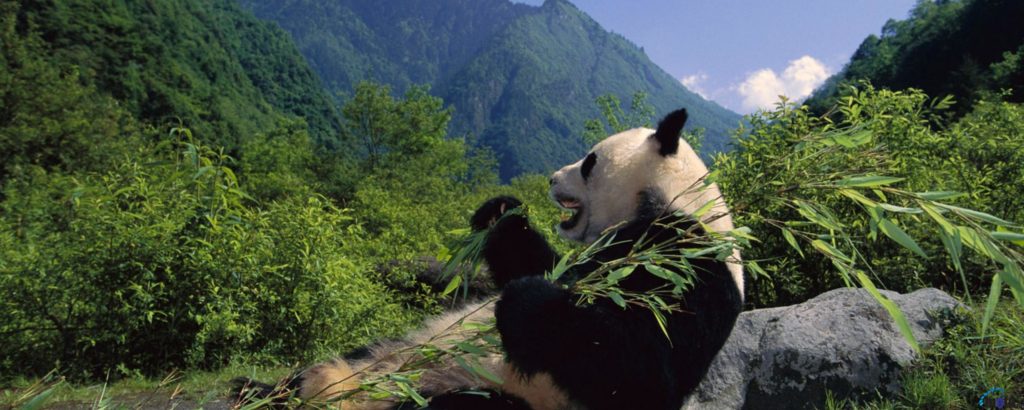
While poor land management practices, poaching and disease remain current threats to red pandas, a further rise in global temperatures could make them and other plants and animals that share their range even more vulnerable, researchers say.
Recent studies suggest that global warming could cause bamboo species in lower altitudes in China to move to higher elevations, replacing the type of bamboo that giant pandas currently eat. “The slow dispersal ability of bamboo species due to special colonization would likely prevent them from fully colonizing new potential habitats,” wrote researchers in a study published in the journal Biological Conservation. “As a result, bamboo species outside the current panda habitats would be unlikely to become the stable food sources for giant pandas within the next 100 years — unless artificial measures are taken to facilitate dispersal” (Li et al., 2015).
 Giant panda eating bamboo in Wolong Nature Reserve, Sichuan, China
Giant panda eating bamboo in Wolong Nature Reserve, Sichuan, China
Like giant pandas, with whom they share part of their terrain, red pandas subsist largely on a bamboo diet. And like giant pandas, red pandas face further destruction of their habitat due to climate change.
In 2015, red pandas’ status dropped from “vulnerable” to “endangered” on the International Union for the Conservation of Nature’s Red List of Threatened Species. Climate change is among the factors intensifying the effects of habitat loss and fragmentation, habitat degradation, and physical threats, the assessors who recommended the status change wrote (Glatston et al., 2015).
“Because they are in such a small niche in the Himalayas, and as climate change warms that area and moves that population higher in elevation, they’re going to lose habitat probably faster than they can accommodate to climate change,” said conservation biologist Elizabeth Freeman in an August 2015 New York Times article. “I see them as being a critical indicator species for the health of the Himalayan ecosystem, probably more so than giant pandas.”
Preserving this “indicator species” may well depend on the diversity and abundance of its food supply. Planting bamboo and educating the public on the use of alternative energy are just a few of the activities researchers say must be prioritized to stem further forest destruction (Glatston et al., 2015).
The Red Panda Network’s team of 54 forest guardians (FGs) is integral to this work. By monitoring red pandas and encouraging community involvement, the FGs help save red panda territory.
You, too, can help save red pandas by helping one of their caretakers. In sponsoring an FG, you not only support their work, you support their families. If you would like to be an FG sponsor, please visit this page.
Thank you for reading!
Dawn Peterson
Writing and Communications Volunteer
Red Panda Network
